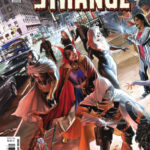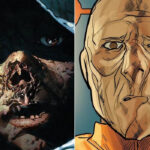‘Doctor Robert’, a track from The Beatles’ seminal album Revolver, often sparks curiosity among fans. Penned primarily by John Lennon, with contributions from Paul McCartney, this song stands out for its then-subtle, now-obvious allusions to drug use. While initially flying under the radar upon its 1966 release, ‘Doctor Robert’ has since become recognized as a commentary on the burgeoning drug culture of the era, wrapped in a catchy Beatles tune. But who exactly was Doctor Robert, and what’s the story behind this intriguing song?
The Mystery of Doctor Robert Unveiled: Not Fraser, but Freymann
For years, a popular theory circulated suggesting that ‘Doctor Robert’ was inspired by Robert Fraser, a well-known London art dealer. However, the true muse behind the moniker was Dr. Robert Freymann. Operating a discreet clinic on Manhattan’s Upper East Side, Dr. Freymann was known to his clientele as simply “Dr Robert” or “The Great White Father.” His practice catered to New York’s elite, offering vitamin B-12 injections that were rumored to contain significant doses of amphetamines. These injections were sought after for their energy-boosting effects, and Dr. Freymann became a figure of fascination and whispered legend within certain circles.
Lennon and McCartney’s Take: A Parody of the “Fix-It” Doctor
The story of Dr. Freymann and his potent “vitamin shots” reached Lennon and McCartney during one of their American visits. Amused and intrigued by this concept of a doctor readily dispensing energizing substances, they conceived ‘Doctor Robert’ as a satirical take on this phenomenon. Paul McCartney described the song as “a parody on that idea,” emphasizing that it was a “piss-take” on the notion of a doctor who could solve your problems with drugs. Lennon himself admitted the song was “mainly about drugs and pills” and, in part, autobiographical, referencing his own role in carrying pills for the band in their early touring days. This candidness, viewed in retrospect, reveals the song’s deeper connection to the band’s own experiences and observations of the changing times.
Recording Doctor Robert: Capturing the Sound
The Beatles commenced recording ‘Doctor Robert’ on April 17, 1966, at Abbey Road Studios. The initial session focused on laying down the instrumental backing track. Seven takes were recorded, featuring the core instrumentation of lead and rhythm guitars, bass, and drums. Subsequently, maracas, harmonium, and piano overdubs were added to enrich the sonic texture. Two days later, on April 19th, the vocal tracks were recorded, completing the song’s production. This efficient recording process is characteristic of The Beatles’ studio work during this prolific period, showcasing their ability to quickly translate creative ideas into polished recordings.
Doctor Robert in the Beatles’ Canon
‘Doctor Robert’ found its place on both the UK and US versions of Revolver, albeit on different release dates due to variations in album tracklists between regions. In the UK, it was included on the Revolver LP released on August 5, 1966. American audiences heard it earlier on the Yesterday and Today LP, released on June 15, 1966. Positioned between ‘For No One’ and ‘I Want To Tell You’ in the Revolver track listing, ‘Doctor Robert’ contributes to the album’s diverse sonic landscape, showcasing The Beatles’ willingness to explore contemporary themes within their evolving musical style. The song remains a fascinating glimpse into the band’s lyrical content and the cultural undercurrents of the 1960s, all centered around the enigmatic figure of “doctor robert.”


